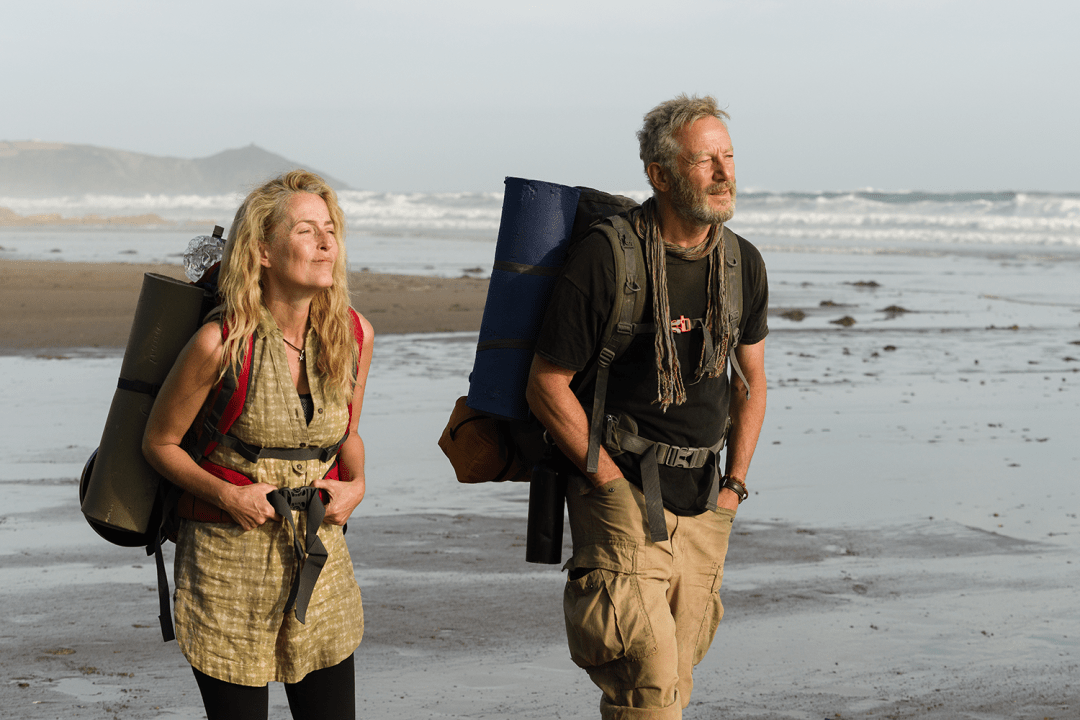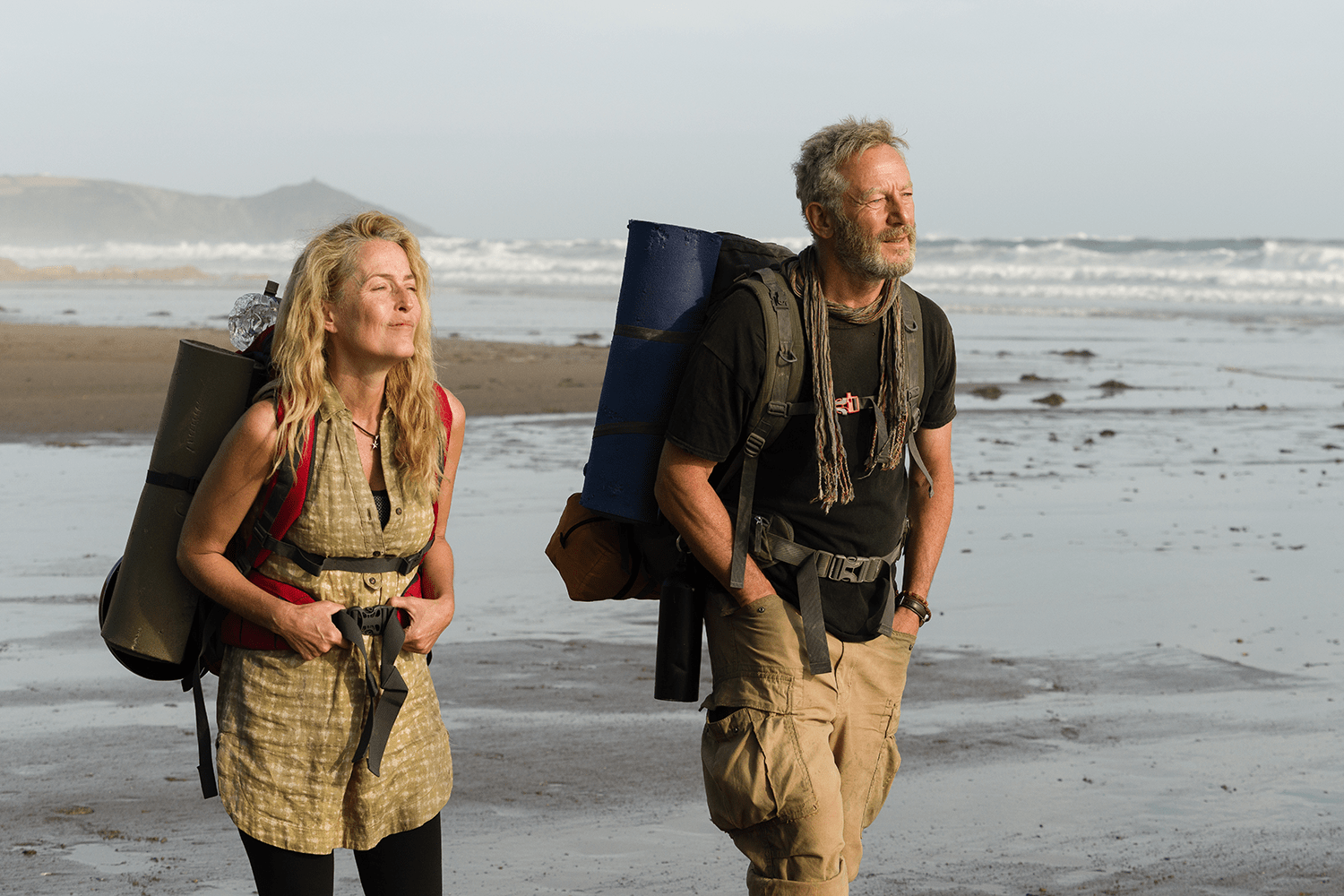
The Salt Path is an adaptation of the best-selling book by Raynor Winn. It tells the true story of how she and her husband, Moth, lost their home and lost all their money. At one point they go to a bank to withdraw all their funds: £1.38. And if that wasn’t bad enough he’s then diagnosed with an incurable neurodegenerative disease. So what do they decide to do? They decide to embark on a 630-mile walk along the South West Coast Path. Isn’t that what any of us would do, given the circumstances? It is a remarkable story and while this may well frustrate those who like a juicy plot arc – does working out if you can stretch to a bag of chips count as plot? – it stars Gillian Anderson and Jason Isaacs who make it rather glorious.
Gillian Anderson and Jason Isaacs make it rather glorious
The screenplay is by Rebecca Lenkiewicz and it’s directed by the acclaimed theatre director Marianne Elliott. We begin with Rayner and Moth in lashing rain seeking to save their flimsy tent from washing away in the middle of the night and then we’re flashing back to the beginning. That is when they are hiding out in their home as bailiffs thump at the door. They lose everything when an investment with a friend goes bad and a court rules they are responsible for the debt. (It never gets more specific than this. What was this investment? What were they hoping for when they put their money in? We never know.) They had been comfortably off with a small, beloved farm and holiday lets. All gone, and now here we are, in the doctor’s office, as Moth is given his diagnosis (corticobasal degeneration), told that there is no treatment and that he must rest as much as possible (Ha!). With nowhere else to go, they decide to walk.
The route starts at Minehead, Somerset, and finishes in Poole, Dorset, taking in the stunning Devon and Cornish coasts. (There is no shortage of drone shots, in case you were worried.) At the outset Moth has a painful limp which is torturous to watch (let the poor fella rest!). Plot points, such as they are, involve blisters and sunburn, gales and storms, dog walkers catching them mid-toilet, and Moth sometimes being mistaken for the poet Simon Armitage. They meet human indecency – and human decency in the form, say, of a free Cornish pasty from a café. What do you eat, when you only have £1.38 in the bank? Noodles, as a rule. It does get a tad repetitive. How many times can you watch someone pack up for another day of trudging along? And you can guarantee that any setback – Moth not being able to get up, for example – will be followed by a moment when a seal appears on the beach or one or the other is ecstatically breathing in the sea air. The healing power of nature and all that.
Though you can’t hold it against Rayner and Moth that they are long married and deeply in love, it does mean their relationship remains unchanging. There is only one moment of friction between the two, concerning the court case – her fault, he says; his fault, she says – but it’s quickly over and then it’s another drone shot. I would have liked fewer drones and more on the specifics of what ruined them – why so vague? – but there you are. It’s a long old walk. Narratively underpowered, maybe. But the dialogue is nicely spare. And the unshowy, dialled-down performances of both Anderson and Isaacs feel so lived in and truthful they prevent your own energy from flagging. You’ll probably now want to know whether Rayner and Moth blew their budget on that bag of chips… Spoiler alert: yes.








Comments